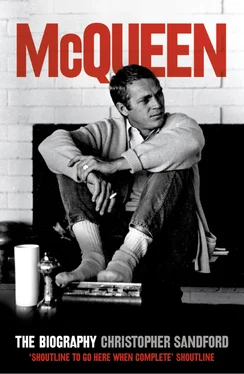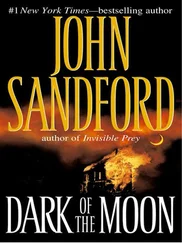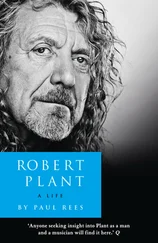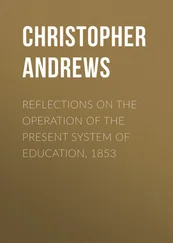Wanted took a season to find its audience, but Steve became an instant cult. Suddenly, he was an early middle-aged golden boy who had views on everyone in town. Hollywood, in turn, sat up and noticed McQueen for one reason or another; he didn’t inspire many lukewarm feelings. The airwaves and hoardings were dominated by pictures of him in character, posing on the prairie in chaps, boots and Stetson, and brandishing his long gun. He was making a steady $750 a week, plus endorsements. Out of his new earnings McQueen bought his first Porsche and an underslung, production model XK-SS Jaguar – the ‘green rat’. A replica Winchester was bolted to the hood, the snub nose tilted against the sky like a live cannon. Steve collected so many unpaid tickets in these two machines that, within a year, his driver’s licence would be torn up. He also, much less publicly, embarked on a gradual self-improvement course at the Amelia Earhart branch of the LA library, immediately around the corner from his house. Steve’s autodidactism sprang out of genuine simplicity and humility, as well as the familiar, nagging doubts about his long-term security as an actor. ‘I don’t want to grow old living in a street called Klump,’ he explained to Julian.
His wife stayed home now, barefoot and pregnant, allowing Steve to indulge his quite unmodified, pre-Aids lifestyle. Nor, in that bygone era, was sexual equality ever much of an issue. ‘All I can say is, that so far as I’m concerned, a woman should be a woman. By day she should be busy making and keeping a home for the man she loves. At night she should be sleeping with him.’ To this stark ideology Neile would add that ‘[Steve was] the quintessential male chauvinist pig.’ The flesh, meanwhile, kept coming, whether on set or in the room McQueen sometimes kept downtown, described by one guest as ‘conceding nothing to romance…the brown walls were peeling, the wooden bed creaking and the three greasy windows covered with yellow tar paper’. Another colleague from Wanted happened to see Steve setting out from this establishment late one afternoon in 1958. The short journey west down Sunset towards Laurel Canyon amounted to a one-man demolition of the Highway Code. It was driving Le Mans-style, foot hard on the gas, stamping on the brake, lurching, squealing, once swerving away from a pedestrian and mounting the pavement.
‘I didn’t know where he’d been or where he was going, but I can see him now in that hopped-up rat, doing about eighty, scattering people left and right. A real man on the move…Then that same week, I was watching TV and there was a trade show where they praised Steve to the sky for having the right stuff, and saying that with a few other things in place, he was bound to get better still and become a worthy successor to the John Waynes and Gary Coopers, and even to be – I’m quoting – the baddest star in Dodge.’
McQueen never really enjoyed being a TV star. He had a riff, which he gave to anybody who would listen, entitled ‘The Factory’. Every trade reporter Dave Foster brought him heard it, to the extent that it induced affectionate eye-rolling when it came up. ‘The Factory’ was based on Steve’s dislike of having to get up at five in the morning in order to report on set for a full day’s filming. ‘They just want it slam-bang, one take and onto the next. Assembly-line stuff. I didn’t bust my ass all those years in New York just to end up acting in some factory.’ Behind McQueen’s self-pity lay a broad streak of professionalism, even perfectionism. He wanted every shot and every show to count and he wanted to grow as an actor. When not berating a Donner, Steve would often stand at his director’s shoulder, asking about camera angles and lighting. McQueen ‘had only to be exposed or shown, and he never forgot…He absorbed knowledge of any kind like a blotter.’ Across that nightmare first season, and into its second, Steve became Wanted ’s player-manager, suggesting scenes and set-ups, quite complicated shots like ‘Let’s track fast to the gun, then pull back in a smooth flow – tension and release’ or, ‘Dolly-out on the silhouette, Dick’ – advice that could raise hackles as well as the show’s quality. In a format where time was tight, most directors had no higher ambition than staying in focus and nobody bothered much about motivation, it was inevitable that people would talk about the new kid in town who wanted everything done right, or, failing that, his way.
They did talk. Men like Janes saw how ‘Steve was fixated on the part. He wanted to make it unusual, and also to [break into] films…So he’d get furious…he was so focused on what he was doing,’ crashing back and forth between set and trailer, a brute even by Hollywood TV standards. To many who watched him work, McQueen – with his tendency to kill a weak scene with a curt Shit – still did a fair impression of a ‘royal pain in the ass’, however apposite and penetrating his remarks. According to Nick Payne, ‘he was combative rather than conciliatory,’ but then contradictorily would take the entire Wanted crew and their wives out to dinner. Another colleague remembers that ‘McQueen usually arrived on set looking like thunder.’ But this soon broke and followed a familiar pattern. ‘He’d be a turd and the director would snap,’ he says. ‘Then they’d make up.’
Steve’s arrival on his motorbike for the day’s shoot, at least early on, was the signal for muted groans, the respect accorded an admittedly gifted but temperamental child. The first cameraman on Wanted claimed he could tell his boss’s mood by the clothes he showed up in. All-black leathers evidenced a storm – trouble ahead. A denim rig with a loud shirt was the sign of good humour – a day when he was approachable and nearly an entire episode could be shot. A neutral outfit with dark glasses signalled the unpredictable. This last look was the most common.
Despite or because of the tension, Wanted soon began to improve. As a rule, the scripts had no pretensions to subtlety. In a typical plot Randall would chase and get his man (first act), be foiled (second act), then resolve the crisis in a mild twist (third act). Justice was done, loose ends tied up, and there was never a dull moment, a scene that unfolded merely for its own sake. But within a dozen episodes, and thanks largely to McQueen, Wanted was breaking new ground. Then, it had been a formulaic channelling of John Wayne. Now, it toyed with the familiar genre of half-hour Westerns while skilfully distancing itself from almost all cliché. Daringly, Steve played the role with an ethical centre closer to Bogie’s in High Sierra. But he went vastly further than that onto what had hitherto been the stage’s traditional turf: his hero wasn’t a shoot-’em-up hard man with no time for metaphysical asides, but instead the critical study of a morally aware adult willing to do anything reasonable, but no more, to get his bounty back to town. Once or twice Randall even let his man go.
Sympathetic, low-key, physically active; there was both charity and cruelty in this radical hybrid of McQueen’s.
Wanted barely troubled the Nielsen ratings for its first six months. But by late March 1959 it had moved into the charmed circle of the Top Ten, with a 30.6 share – 15 million viewers. Everything now went overboard. Week after week, Steve’s picture appeared in the trade press and the Hollywood fanzines, some thirty hits in all. As well as Foster’s ‘awareness campaign’, there were hand-outs, potted biographies, glossies and souvenirs, all coupled with a strategic year-long blitz by CBS that would lead to stories in Variety and Photoplay. People who would never go near Broadway now knew the name and, above all, the face of Steve McQueen.
Читать дальше












